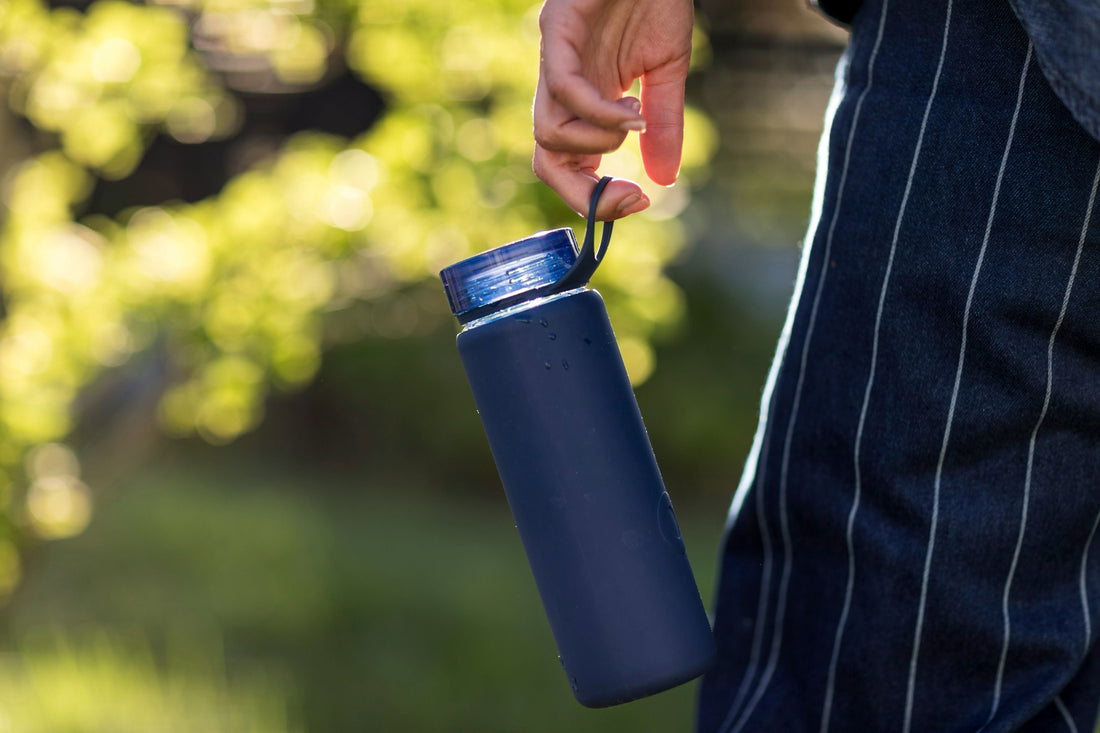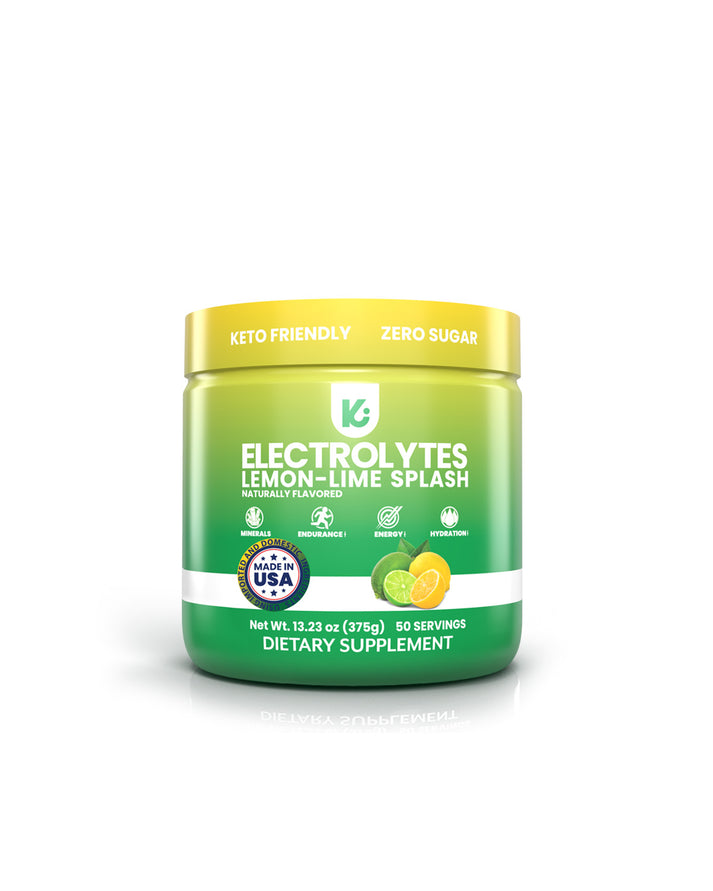
From Sodium to B-Vitamins: The Science Behind the Best Electrolyte Drinks
Share
Best Electrolyte Drink Guide: Clean, Sugar-Free Electrolyte Powder, Ratios & Ingredients That Actually Hydrate
How to spot the best electrolyte drink and build a smarter, sugar-free electrolyte powder routine—no fillers, just results.
Ever polish off a bright-colored sports drink only to feel just as drained minutes later? That’s a sign the formula fixed taste, not the true hydration issue. Without a balanced profile of sodium, potassium, magnesium, and calcium, fluid slips through you, leaving muscles cramping and energy flat (Sawka et al., 2007; NASEM, 2019). The real pain point starts inside the bottle—not in your workout. Choosing a clean electrolyte powder or well-formulated electrolyte drink mix is what separates a quick sugar hit from the best electrolyte drink for performance.
In minutes, you’ll see which ingredients move the needle—and which fillers don’t. You’ll learn to decode labels, compare electrolyte powder vs hydration packets/electrolyte packets and even when electrolyte tablets or electrolyte water make sense. Use this as your quick foundation for choosing a truly clean electrolyte drink mix with an appropriate electrolyte ratio.
What You'll Learn: What ingredients should a good electrolyte drink contain?
- Sodium, potassium and chloride balanced for rapid fluid uptake (WHO, 2005; Maughan et al., 2016).
- Magnesium + calcium to keep muscles firing smoothly and support recovery (NIH ODS, 2022; Allen and Westerblad, 2021).
- Trace minerals and select B-vitamins that steady everyday energy (Kenney, Wilmore and Costill, 2019).
- Red flags: artificial dyes, bulking fillers, and heavy sugar—opt for sugar free electrolytes when possible.
- Solubility and natural flavor that encourage daily compliance—the hallmark of the best hydration powder.
TL;DR — What Makes an Excellent Electrolyte Drink?
A great electrolyte drink features a balanced blend of sodium, potassium, magnesium and calcium—without excessive sugar or dyes. Choose a clean, sugar-free electrolyte powder that mixes fast, tastes natural and supports hydration, muscle function and steady energy (Sawka et al., 2007; NASEM, 2019). For sugar-free hydration, try Keppi Lemon-Lime Electrolyte Powder.
Learn more about the productWhat Are the Best Education Topics Related to “What ingredients should a good electrolyte drink contain?”
- Sodium Balance – background on the mineral you sweat out fastest.
- Potassium Support – context for steady nerve and muscle function.
- Magnesium & Calcium Synergy – joint roles in contraction and relaxation.
- B-Vitamin Energy Assist – micronutrient support for metabolism.
- Low Sugar & Clean Formulation – factors behind a clean electrolyte drink mix.
Sodium Balance: The Cornerstone of the Best Electrolyte Drink
You lose more sodium than any other electrolyte during hard sessions; under-replacing it limits fluid absorption and contributes to cramps and early fatigue (Cheuvront and Kenefick, 2014; Sawka et al., 2007). For most athletes, aim for ~300–700 mg sodium per serving within total daily limits—one of the core markers of the best electrolyte powder (NASEM, 2019).
- Pulls water through the small intestine via sodium–glucose transport for faster rehydration (WHO, 2005).
- Supports stable plasma volume so your heart works efficiently (Sawka et al., 2007).
- Helps avoid hyponatremia during long or hot events when paired with appropriate fluid intake.

Potassium Support: Partner Mineral for a Smart Electrolyte Ratio
Potassium partners with sodium to balance fluid inside and outside cells and to stabilize neuromuscular firing. A practical target is ~200–400 mg potassium per serving with a potassium-to-sodium ratio near 1:3 for high-sweat training (NASEM, 2019). Many mixes under-deliver here—watch this if you train most days of the week.
- Helps regulate heartbeat and blood pressure under exertion.
- Counters excess dietary sodium for even electrolyte profiles.
- Supports glycogen storage for later-stage endurance.
“Electrolytes such as sodium, potassium, calcium and magnesium play vital roles in maintaining hydration, nerve function and acid-base balance. Losing electrolytes through sweat can disrupt performance. Select products with balanced minerals, moderate sugars and minimal additives.”
Magnesium & Calcium Synergy: Muscle Function in a Clean Electrolyte Powder
Magnesium participates in >300 enzymatic reactions and supports ATP production, while calcium drives each contraction–relaxation cycle (NIH ODS, 2022; Allen and Westerblad, 2021). Bioavailable forms (e.g., magnesium citrate; calcium lactate) improve uptake—traits you’ll often find in higher-quality, natural electrolytes formulas.
- Magnesium calms over-excited nerves during prolonged training.
- Calcium enables strong, efficient contractions for power output.
- Combined intake supports bone health and recovery.
This pairing solves the misconception that these minerals only matter for bone health—they also influence every stride, rep or serve (Kenney, Wilmore and Costill, 2019).
B-Vitamin Energy Assist: Metabolic Support in the Best Electrolyte Drinks
Vitamins B1, B3, B5, B6 and B12 help convert carbs, fats and proteins into usable energy and support red-blood-cell formation; sweat and high training loads can increase needs (Kenney, Wilmore and Costill, 2019). Including roughly 20–50% DV per serving can support focus and perceived exertion when paired with minerals.
Low Sugar & Clean Formulation: Why Sugar-Free Electrolytes Win
A touch of carbohydrate can aid sodium transport, but excess sugar drives GI upset and energy swings (Maughan et al., 2016). Look for sugar free electrolyte powder with transparent labels and no artificial dyes—the profile that defines a truly clean electrolyte powder, not just a flavored sports drink.
- Limits glucose spikes that drain endurance later.
- Cuts empty calories for everyday hydration and keto electrolytes needs.
- Removes synthetic colors that add no physiological benefit.
The Ingredient-Focused Hydration Solution
When sweat rates and environments change, a mineral-rich, sugar-free solution steadies fluids without the crash. Keppi Electrolyte Powder centers on practical, science-first electrolyte ratios and fast dissolution for daily training.
This approach supplies an intentional balance of sodium, potassium, magnesium, calcium and supportive B-vitamins—exactly what you’d expect from a modern, clean electrolyte drink mix.
Four-Step Implementation Strategy
- Scoop one level serving of Lemon-Lime mix; each portion delivers ~500 mg sodium, 350 mg potassium, 100 mg magnesium plus supportive calcium and B-vitamins (aligns with ACSM/WHO principles).
- Pour 16–20 oz cold water for an ideal concentration that speeds absorption and minimizes GI upset (WHO, 2005).
- Shake or stir 5–10 seconds until dissolved—no grit, consistent flavor—hallmarks of the best electrolyte drink.
- Sip pre, mid or post-workout; increase frequency with heat, altitude or higher sweat volume.
Lemon-Lime Electrolyte Drink Mix: Clean, Fast-Acting Hydration

Keppi Lemon-Lime Electrolyte Drink Mix
Crisp, natural citrus hydration with a science-backed blend of sodium, potassium, magnesium, calcium and trace minerals. This sugar-free, clean electrolyte powder dissolves quickly to fuel hydration, muscle support and faster recovery—without artificial sweeteners or dyes.
Why Our Lemon-Lime Blend Stands Out
- Zero sugar keeps blood glucose steadier—ideal for low-carb plans and keto electrolytes.
- Citrate minerals enhance bioavailability—more benefit per scoop (NIH ODS, 2022).
- Lightweight hydration packets slip into any bag—perfect from travel to marathon prep.
Use it consistently and you’ll notice steadier energy, fewer cramping sensations and smoother post-session recovery because every ingredient serves a purpose. Keep a tub at home or electrolyte packets in your gym bag, follow the steps above, and let the balanced formula handle the science while you focus on performance.
Conclusion
A solid electrolyte drink keeps sodium, potassium, magnesium and calcium in balance while trimming unnecessary sugar and dyes. That combination supports hydration, muscles and recovery whether you’re training hard or tackling a long workday (Riebl and Davy, 2014; Cheuvront and Kenefick, 2014). Use these principles to pinpoint the best electrolyte powder for your routine—including whether you prefer tubs, electrolyte packets or electrolyte tablets.
To put these takeaways into action, explore our Keppi Lemon-Lime Electrolyte Powder—a fast-mixing, clean electrolyte drink mix that travels anywhere.
Revitalize Your Routine Today
Ready for more effective hydration and everyday energy? Discover the benefits of Keppi Lemon-Lime Electrolyte Drink Mix—blended for fast absorption and pure, clean ingredients that work as hard as you do. Learn more about how it works and join thousands of satisfied customers.
Learn MoreReferences
- American College of Sports Medicine — Sawka, M.N. et al. (2007) ‘Exercise and fluid replacement’, Medicine & Science in Sports & Exercise, 39(2), 377–390.
- Cheuvront, S.N. and Kenefick, R.W. (2014) ‘Dehydration: physiology, assessment, and performance effects’, Sports Medicine, 44(1), 59–70.
- Riebl, S.K. and Davy, B.M. (2014) ‘The Hydration Equation: Water balance & cognitive performance’, Nutrition Reviews, 72(S2), 97–112.
- World Health Organization (2005) The Treatment of Diarrhoea (4th rev.). Geneva: WHO — sodium–glucose co-transport; ORS principles.
- Maughan, R.J. et al. (2016) ‘Rankings of beverages for hydration: the beverage hydration index’, American Journal of Clinical Nutrition, 103(3), 717–723.
- National Academies of Sciences, Engineering, and Medicine (2019) Dietary Reference Intakes for Sodium and Potassium. Washington, DC: National Academies Press.
- NIH Office of Dietary Supplements (2022) ‘Magnesium — Fact Sheet for Health Professionals’. Available at: https://ods.od.nih.gov/.
- Allen, D.G. and Westerblad, H. (2021) ‘Role of calcium in muscle fatigue’, Physiological Reviews, 101(2), 683–728.
- Kenney, W.L., Wilmore, J. and Costill, D. (2019) Physiology of Sport and Exercise (7th ed.). Human Kinetics.
